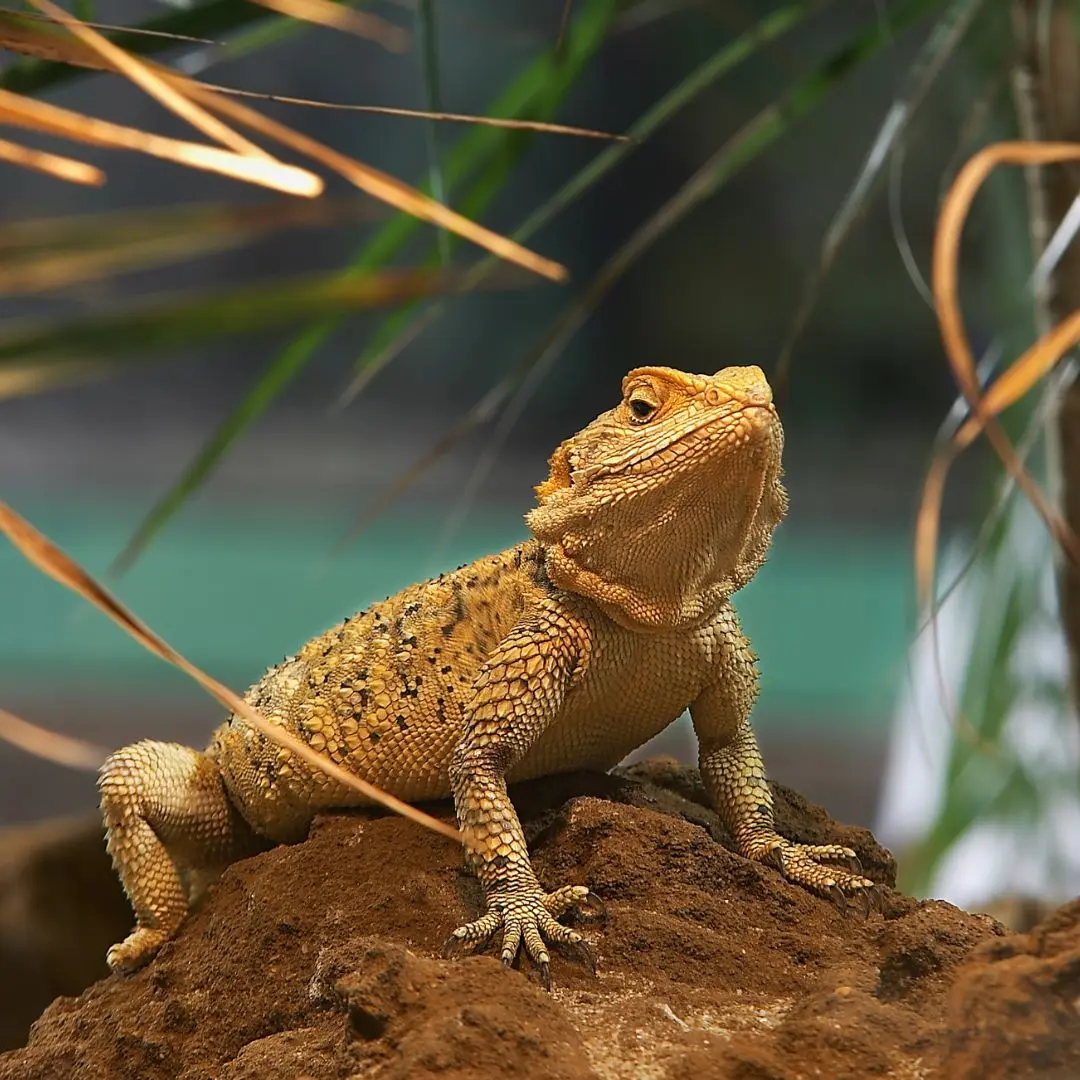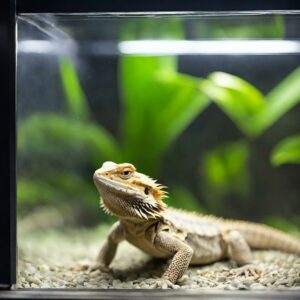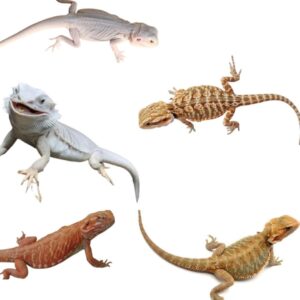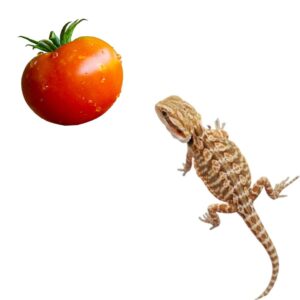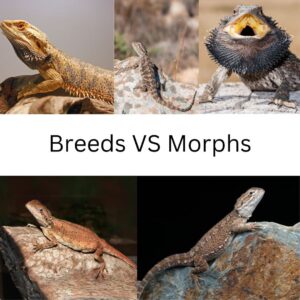A fancy bearded dragon is a type of bearded dragon that has been selectively bred for unique and striking appearances.
Unlike the standard bearded dragon, which typically comes in shades of brown, yellow, and orange, fancy beardies boast a kaleidoscope of colors, patterns, and textures.
In this article, we will delve into the world of the fancy bearded dragon, exploring its origins, physical characteristics, care requirements, behavior, and ethical considerations.
Table of Contents
Origin and History of Fancy Bearded Dragons
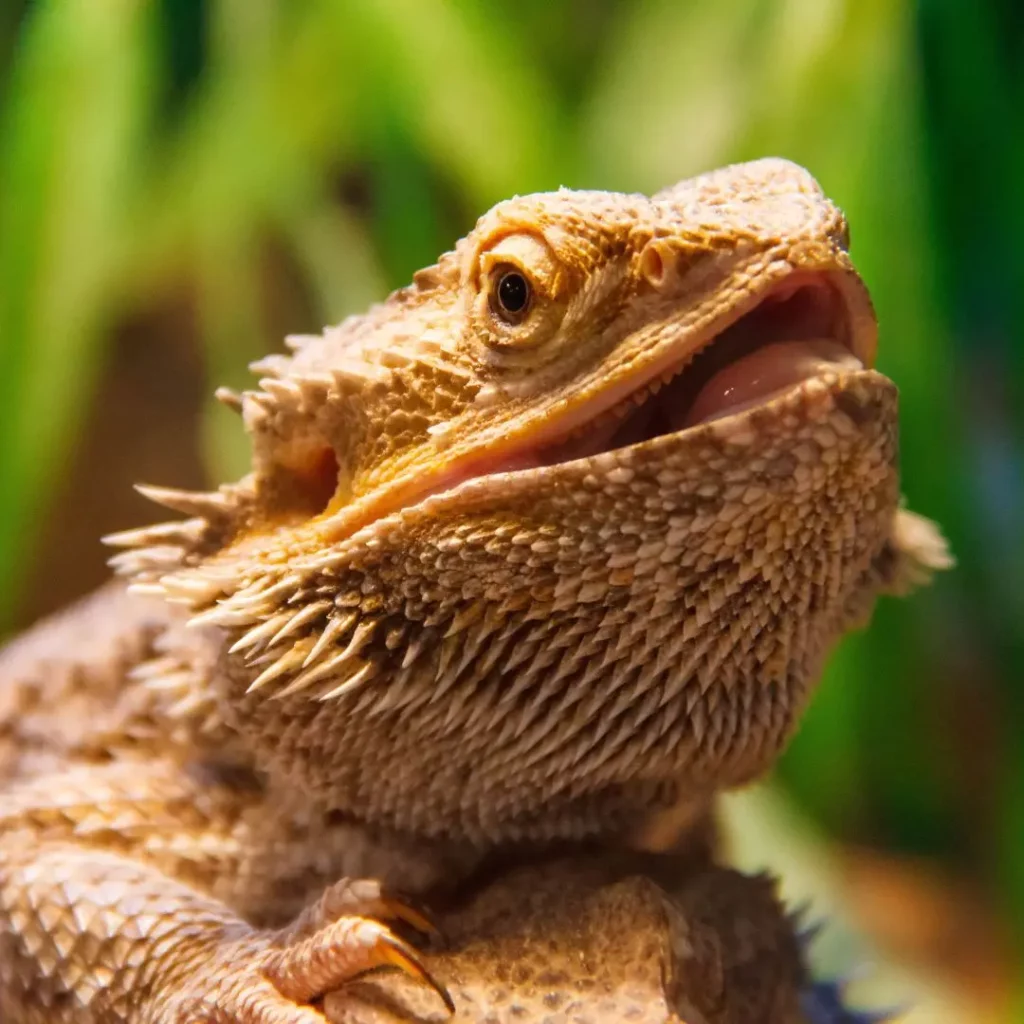
The fancy bearded dragon is native to the arid regions of Australia. They inhabit woodlands, deserts, and scrublands, adapting to harsh environments.
These reptiles have been an integral part of Aboriginal culture for centuries. Recently, they have gained popularity as pets due to their unique appearance and relatively low maintenance needs.
Physical Characteristics of Fancy Bearded Dragons
They have a triangular-shaped head with rows of spiky scales, earning them the name “bearded dragon.” Their bodies are covered in overlapping scales in various colors and patterns. From vibrant oranges and reds to subtle grays and browns, their coloration can vary greatly among individuals.
These reptiles boast a long tail, which they use for balance and communication. They can inflate and darken their throat pouch, resembling a beard, hence the name.
Additionally, bearded dragons have sharp claws for climbing and digging.
Fancy bearded dragons come in a wide variety of morphs, each with its own unique combination of colors, patterns, and textures.
Some popular morphs include:
Hypomelanistic: These beardies have reduced melanin, resulting in lighter colors and sometimes translucent skin.
Citrus: Vibrant shades of yellow and orange, often with contrasting patterns.
Zero: Almost completely lacking in melanin, creating a ghostly white appearance with red eyes.
Leatherback: Smooth, scaleless skin in various colors and patterns.
Translucent: Skin that allows you to see the underlying veins and organs, creating a stunningly ethereal look.
What Makes Them Special
Vibrant Colors: Fancy bearded dragons come in a dazzling array of colors, including citrus yellow, fiery orange, deep red, emerald green, and even lavender. Some morphs even sport multiple colors, creating stunning patterns like stripes, spots, and marbling.
Distinctive Patterns: Beyond color, fancy beardies often exhibit unique markings like stripes, speckles, and intricate geometric patterns. These patterns can be bold, contrasting, or subtle and delicate, adding another layer of visual interest to these charismatic reptiles.
Reduced Spiking: While all bearded dragons have the characteristic “beard” around their throats, fancy beardies often have less pronounced or even completely smooth beards. This preference for a sleeker look is a result of selective breeding and contributes to the overall aesthetic appeal of these reptiles.
Lifespan and Growth Stages of Fancy Bearded Dragons
The lifespan of a fancy bearded dragon ranges from 10 to 15 years, depending on
- diet,
- habitat conditions,
- and genetics.
Like all reptiles, they undergo a series of growth stages.
As hatchlings, they measure around 3 to 4 inches in length and gradually grow to reach their adult size of 18 to 24 inches.
Proper nutrition and a suitable habitat are crucial for their healthy development.
Ideal Habitat and Setup
A spacious enclosure with basking, hiding, and climbing areas is essential.
The tank should have a full-spectrum UVB light source to provide the necessary UV radiation for vitamin D synthesis.
Substrate options include reptile carpet, newspaper, or ceramic tiles, which are easy to clean and reduce the risk of impaction.
Temperature gradients allow the dragon to thermoregulate. The basking spot should range between 95 and 105 degrees Fahrenheit, while the cooler end should be around 75 to 85 degrees Fahrenheit.
Nighttime temperatures can dip slightly but should not fall below 65 degrees Fahrenheit.
Nutritional Needs and Feeding Schedule
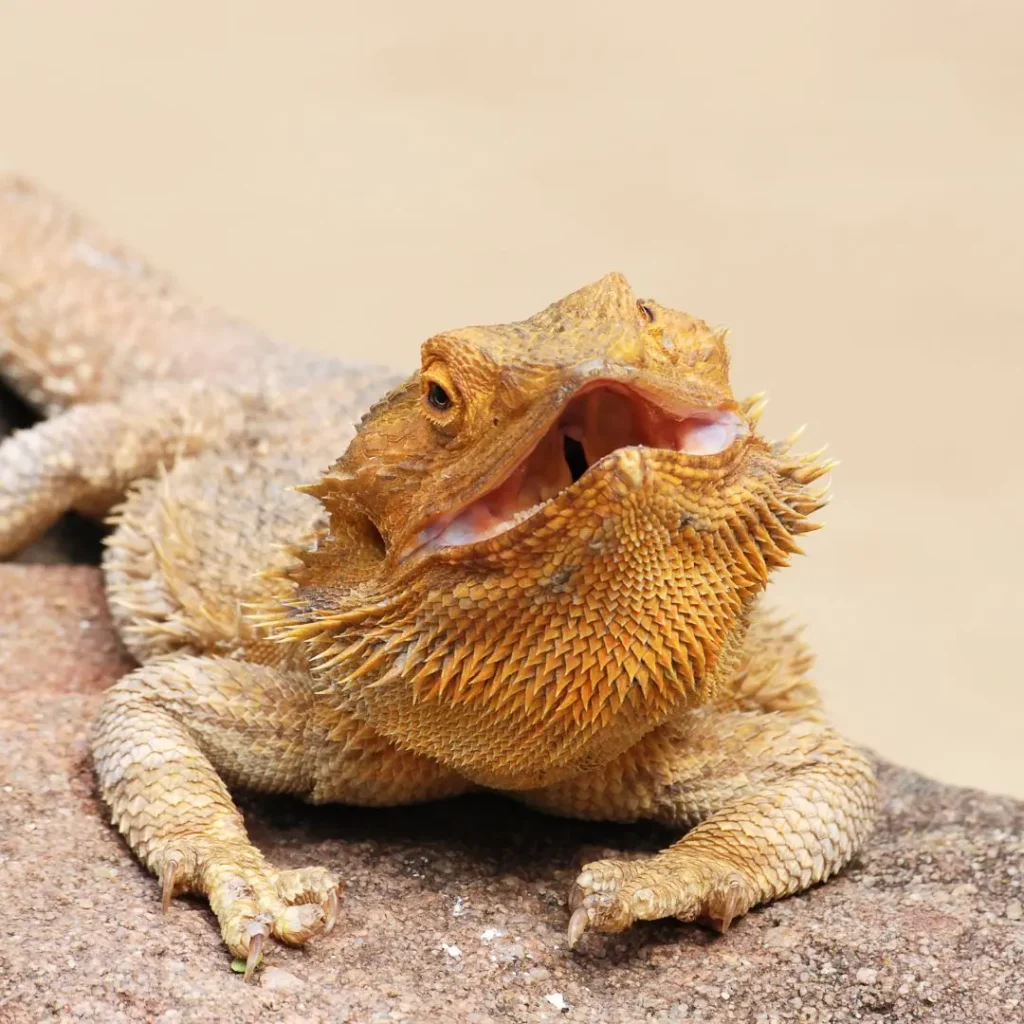
Fancy bearded dragons are omnivorous, requiring a balanced diet of insects and vegetables. A staple of their diet includes gut-loaded insects such as crickets, mealworms, and silkworms.
Additionally, leafy greens, vegetables, and fruits should be provided.
Calcium and vitamin D3 supplementation are essential, as they aid in proper bone development.
- Feed juvenile dragons twice daily, gradually reducing the frequency as they mature.
- Adult dragons usually require feeding once a day.
- Fresh water should always be available, provided in a shallow dish that allows easy access for drinking and soaking.
Health Concerns and Regular Check-ups
Maintaining the health of your fancy bearded dragon requires regular veterinary check-ups.
Common health issues include parasites, respiratory infections, metabolic bone disease, and skin infections.
Signs of illness can vary, but any changes in appetite, behavior, or appearance should be closely monitored.
Regular fecal tests and physical examinations by a reptile-savvy veterinarian are crucial for early detection and treatment of potential health issues.
Behavior and Temperament of Fancy Bearded Dragons
These reptiles have unique behaviors such as head bobbing, arm waving, and the famous “beard blackening.” Head bobbing is their way of asserting dominance or excitement, while arm waving often signifies submission. The darkening of the throat pouch can indicate aggression or stress.
Social Interaction and Handling
Bearded dragons are generally sociable and can bond with their owners through regular interaction. They enjoy gentle handling and can become accustomed to human touch if introduced properly. However, respecting their boundaries and avoiding excessive handling is important, especially during shedding or stress.
Breeding and Mating Habits
Breeding fancy bearded dragons requires careful consideration and should only be undertaken by experienced individuals.
Female bearded dragons can lay up to 25 eggs in clutches, which need suitable incubation conditions to ensure successful hatching.
Mating behaviors involve courtship rituals, where the male bobbs his head and exhibits bright coloration to attract the female.
Legal Restrictions and Permits
Before acquiring a fancy bearded dragon, it is vital to research and understand the legal restrictions in your area. Some regions have specific regulations or permits required for keeping reptiles as pets. It is essential to abide by these laws to ensure the well-being of both the reptile and the owner.
Ethical Breeding and Pet Trade Concerns
Ethical breeding practices are crucial within the fancy bearded dragon community. Reputable breeders prioritize their animals’ health and genetic diversity, while avoiding the overproduction or unethical sale of these reptiles. Responsible pet trade practices involve educating potential owners about proper care requirements and discouraging impulse purchases.
Responsible Pet Ownership and Conservation Efforts
As a fancy bearded dragon owner, you are responsible for providing optimal care for your pet. This includes regular veterinary check-ups, proper hygiene practices, and ensuring their physical and emotional well-being. Additionally, staying informed about conservation efforts and supporting reputable organizations working towards conserving bearded dragon species in their natural habitats is commendable.
In conclusion, fancy bearded dragons make fascinating and rewarding pets for reptile enthusiasts. Understanding their origin, physical characteristics, care requirements, behavior, and ethical considerations is essential for providing a suitable and enriching environment. By becoming a responsible owner and respecting the needs of these captivating creatures, you can enjoy the companionship and beauty of the fancy bearded dragon for years to come.
My Senior Paws is a participant in the Amazon Services LLC Associates Program, an affiliate advertising program designed to provide a means for sites to earn advertising fees by advertising and linking to Amazon.com. We also participate in other affiliate programs which compensate us for referring traffic.
